Hair Transplant in Budapest
Search and Compare the Best Clinics and Doctors at the Lowest Prices for Hair Transplant in Budapest
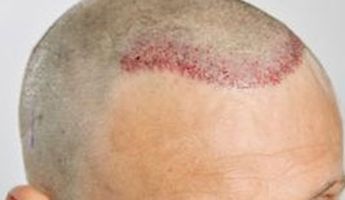
Find the best clinics for Hair Transplant in Budapest
With Medijump you can browse 3 facilities offering Hair Transplant procedures in Budapest. The cheapest price available is $1,801 in Budapest. And for the cheapest price globally, prices start from $126 in Egypt.
Hair Transplant in Hungary
Price: $ 1,801
Hair Transplant in Budapest
Price: $ 1,801
Egypt offers the best prices Worldwide
Price: $ 126
From 10 verified reviews
tom, 14 July 2020
I had a major FUE treatment carried out in 2019 and am now very satisfied with the end result after one year. Thanks and recommendation!
Rainbow Beauty Budapest - hair transplantation, located in Central Budapest, Budapest, Hungary offers patients Hair Transplant procedures among its total of 3 available procedures, across 1 different specialties. The cost of a Hair Transplant procedure starts from £1,445, whilst the national average price is approximately £1,405. All procedures and treatments are undertaken by just a small team of specialists, with 3 in total at the Hospital, and they are accredited by Magyar Plasztikai Helyreállító és Esztétikai Sebész Társaság
Exoderm International Medical Centers - Sopron, located in Central Budapest, Budapest, Hungary offers patients Hair Transplant procedures among its total of 26 available procedures, across 4 different specialties. Currently, there's no pricing information for Hair Transplant procedures at Exoderm International Medical Centers - Sopron, as all prices are available on request only, whilst the national average price is approximately €1,643. All procedures and treatments are undertaken by the lead specialist at the Hospital, and they have multiple recognized accreditations, including: IDA - International Dental AcademyEBOPRAS - European Board of Plastic Reconstructive and Aesthetic SurgeryISHRS - International Society of Hair Restoration SurgeryEURAPS - European Association of Plastic SurgeonsEAFPS - European Academy of Facial Plastic SurgeryESPRAS - European Society of Plastic, Reconstructive and Aesthetic SurgeryISD - International Society of DermatologyIBHRS - International Board of Hair Restoration SpecialistsEDA - European Dental AssociationMFE - Hungarian Dental AssociationMagyar Plasztikai Helyreállító és Esztétikai Sebész TársaságHAED - Hungarian Academy of Esthetic DentistryÖQMed - Qualitätsinitiativen der Österreichischen ÄrztekammerÖGPÄRC - Die Österreichische Gesellschaft für Plastische, Ästhetische und Rekonstruktive Chirurgie
Compare Before & After Photos of _procedure_photos.phpHair Transplant
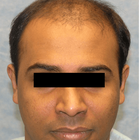
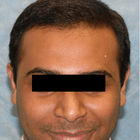
Front view
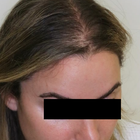
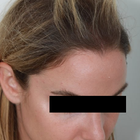
Half-side view
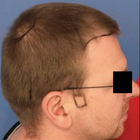
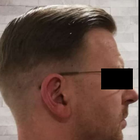
Full-side view
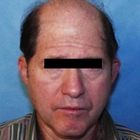
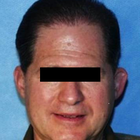
Front view
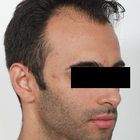
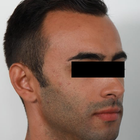
Half-side view
WHY US?
At Medijump, we're making medical easy. You can search, compare, discuss, and book your medical all in one place. We open the door to the best medical providers worldwide, saving you time and energy along the way, and it's all for FREE, no hidden fees, and no price markups guaranteed. So what are you waiting for?

Free

Best Price

Widest Selection

Risk-Free
What you need to know about Hair Transplant in Budapest

Hair Transplantation, also known as hair restoration surgery, is the surgical process of moving hair follicles from one part of the body that is rich in hair (known as a donor site) and embedding them at the the bald area of the head (recipient site). The medical course of action that aims at addressing hair loss issues and improving aesthetics. While there are many causes of hair loss, the most common reason, especially for men, is genetics. Hereditary hair loss as men age is the number one leading factor of baldness.
It is a minimally invasive procedure, performed under local anesthetic and is most commonly used to treat male baldness, but the technique can also be used to restore eyelashes, eyebrows, beard hair and to fill in scars. The procedure usually lasts between 4 to 8 hours, depending on the number of grafts needed. This procedure is a long-term solution to hair loss, with most patients experiencing significant improvement in hair growth after six months to a year.
Why do people experience hair loss?
We lose an average of 100 hairs a day, however, these hairs are immediately replaced by new hairs growing at the same time. Hair loss can occur suddenly or gradually and it may affect your scalp or your entire body, depending on what’s causing it. Other causes of hair loss may include:
- Stress - a lot of people may experience hair thinning for several months due to a physical or emotional shock. However, this type of hair loss is only temporary.
- Certain Hairstyles and treatments - hairstyles that pull your hair like tight pigtails, ponytails or braids can actually cause traction alopecia. Permanent hair treatments and hot oil treatment may also lead to hair loss; these hair treatments cause inflammation to the hair follicles. If there is scarring, hair loss may be permanent.
- Radiation Therapy - for example, during cancer treatment.
- Certain medical conditions and hormonal changes - in women, hormonal changes due to pregnancy, childbirth menopause or thyroid problems may cause temporary or permanent hair loss. As for medical conditions, hair loss may be due to alopecia, scalp infections like ringworm or a hair-pulling disorder known as trichotillomania.
Sudden hair loss may also be a sign of a specific medical condition that will require treatment. You will need to consult your doctor if you experience more than your usual hair loss whenever you are combing or washing your hair and also if you encounter a sudden patchy loss of hair.
A hair transplant is a common treatment performed on people who are experiencing baldness due to aging and heredity factors. However, if you are completely bald with absolutely no hair left, then this type of treatment may not be applicable for you, as you won't have sufficient donor hair to supply.
What is the cost of Hair Transplant in Budapest?
The cost of Hair Transplant in Budapest is typically influenced by various factors. These may include the experience and reputation of the surgeon, the complexity of your case, and the total number of grafts needed. Moreover, the pricing strategy followed by the medical establishment also plays a significant role. Some clinics charge based on the number of grafts transplanted, while others might price the procedure as a package. The exact price can therefore only be determined in consultation with a trusted clinic. While it can appear costly to some, the Hair Transplant is an investment in one's appearance and self-confidence.
What Does The Procedure Involve?
The hair transplant procedure involves taking hair from your Donor Site and transferring it to the area(s) lacking in hair, the Recipient Site, and a local anesthetic will be applied before the procedure begins to limit any discomfort.
There are two main methods used in a hair transplant procedure:
- Follicular Unit Transplantation (FUT) - strips of tissue will be removed from your donor area, these strips will be cut into individual follicular units. Small cuts will be made on your scalp where the follicular unit grafts will be placed. This method is becoming less popular.
- Follicular Unit Extraction (FUE) - individual hair follicles will be directly extracted from your donor area and moved to your recipient site using a specialist microsurgical needle. FUE is now the preferred technique for hair transplants as it will not leave a linear scar at the back of the head.
Procedures are undertaken by a fully qualified technician and usually involve the extraction of around 3,000 grafts, going up to 4,000. Any more, and it will likely require two separate sittings to complete.
How Long Should I Stay in Budapest for a Hair Transplant Procedure?
Hair transplants are usually performed as an outpatient procedure. Thus, you will be able to go back to your hotel immediately after. Both methods used for Hair Transplant treatments usually take 4-8 hours to complete. With FUE technique, there are no stitches or staples to be removed, so you won't need to stay in Budapest for long after the procedure, just allow a day or two to be sure before traveling home.
You should expect to pay the clinic another visit the day after the treatment so the doctor can remove the bandage, examine the areas of intake and transplantation of follicles, before washing your hair using a special technique that you will learn to perform by yourself. Finally, the doctor will provide you with a special shampoo that will help to restore the skin.
What's the Recovery Time for Hair Transplant Procedures in Budapest?
Your scalp will continue to be sensitive to pain for a few days, during which time you should continue to take the medications provided by the doctor. On top of the pain killers and anti-inflammatory meds, you may also be given antibiotics to lessen the risk of infection, as uncommon as this may be.
You should expect to return to work and your daily routine, including exercise, after 5 days. However, the signs of a hair transplant will remain for at least another 2-3 weeks, at which point the newly transplanted hairs will start to fall out - but don't be alarmed! This is to be expected as you've just had a follicle extraction, so dead hair will simply make way for new hair over the coming weeks and months.
If the average person's hair only grows at a centimeter per month, then it will take some time before you can wear your hair long again. You could expect to display short and consistent hair just 4-6 weeks after the treatment.
What sort of Aftercare is Required for Hair Transplant Procedures in Budapest?
After the procedure is complete, anti-swelling medication and painkillers will be available and you'll be provided with various essentials to see you through the days immediately following. Post-op items may include; specialist shampoo, lotion, multivitamins, a special hat, a headband, neck pillow, and wound dressing.
Having already been provided with your post-op aftercare products, you may also be offered Platelet Rich Plasma (PRP) Therapy to help stimulate the hair follicles and encourage hair growth. This is where a small amount of blood is taken, rich in plasma, which is then injected into the Recipient Site.
What's the Success Rate of Hair Transplant Procedures in Budapest?
The success rate for hair transplants is one of the highest, at 98% and is considered the only truly effective remedy for hair loss.
The effectiveness of Hair Transplant treatments is significantly shaped by the surgeon's expertise who executes the process. A seasoned and competent surgeon employs sophisticated methods to prevent harm to the transplanted hair follicles during the process, which leads to a higher likelihood of success. Additionally, the ability of the surgeon to place the grafts in an attractive manner that resembles natural hair growth further enhances the perceived successfulness of the result.
Beyond the competency of the surgeon, the overall health status and lifestyle choices of the patient greatly impact the treatment's effectiveness. Subpar habits such as excessive smoking and alcohol intake can obstruct the recovery process and influence the result adversely. Illnesses like diabetes can also interfere with the likelihood of success.
Consideration of the donor hair's quality is another aspect that may affect the success of the procedure. Generally, those with robust, plentiful hair in the donor region have a higher success rate as compared to individuals with sparse or poor-quality hair. The availability of more follicles for transplantation yields better results. A detailed examination is carried out before the Hair Transplant to verify the quantity and quality of the donor's hair.
Are there Alternatives to a Hair Transplant?
Laser therapy is one alternative to a hair transplant. During this procedure, a low-level laser device will be used as a treatment for a hair loss specifically caused by genetics. This low-level laser with a wavelength of 650 nanometres can actually stimulate your hair growth. However, long term effects for this type of alternative still remains uncertain.
PRP Therapy is another alternative you can consider. This type of treatment will make use of your own blood to promote hair growth. Your blood will be spun in a centrifuge to separate your blood’s plasma component from your red and white blood cells. Plasma contains many growth factors that promote hair growth when injected into the scalp.
Other non-surgical alternatives could include simply shaving all your hair off, trying other hairstyles or using a wig or hairpiece.
How do FUT and FUE Compare?
The two most common techniques used are the Follicular Unit Transplant (FUT) and the Follicular Unit Extraction (FUE). How do they compare?
1. FUT, also referred to as FUSS (Follicular Unit Strip Surgery), involves the removal of a strip of skin from the back of the head containing lots of hair follicles, which is stitched up and hidden by the surrounding hair. Then the strip of follicles is divided into 500-2,000 tiny grafts containing just a few hairs. These are then embedded across the bald area of the head.
2. FUE does not require a strip of skin to be removed, instead, the hair follicles are individually removed from the donor site and positioned across the bald area in tiny slits created by a scalpel or needle.
What are the Risks Associated with Hair Transplant?
Like any surgical procedure, Hair Transplant carries certain risks, although they are relatively rare and usually minor if performed by a skilled and experienced surgeon.
Some potential risks and side effects could include:
- Scarring is the most common side effect (only applicable to FUT)
- Infections
- Temporary loss of sensation around the surgical sites
- Inflammation of hair follicles (folliculitis)
- Temporary scalp pain, itching, and swelling.
- Unnatural-looking hair growth
Whilst the information presented here has been accurately sourced and verified by a medical professional for its accuracy, it is still advised to consult with your doctor before pursuing a medical treatment at one of the listed medical providers
No Time?
Tell us what you're looking for and we'll reachout to the top clinics all at once
Enquire Now

Popular Procedures in Budapest
Prices Start From $153

Prices Start From $500

Prices Start From $4

Prices Start From $500

Recommended Medical Centers in Budapest for Hair Transplant

- Interpreter services
- Translation service
- Religious facilities
- Medical records transfer
- Medical travel insurance
- Health insurance coordination
- TV in the room
- Safe in the room
- Phone in the room
- Private rooms for patients available

- Interpreter services
- Translation service
- Religious facilities
- Medical records transfer
- Medical travel insurance
- Health insurance coordination
- TV in the room
- Safe in the room
- Phone in the room
- Private rooms for patients available

- Interpreter services
- Translation service
- Religious facilities
- Medical records transfer
- Medical travel insurance
- Health insurance coordination
- TV in the room
- Safe in the room
- Phone in the room
- Private rooms for patients available

- Interpreter services
- Translation service
- Religious facilities
- Medical records transfer
- Medical travel insurance
- Health insurance coordination
- TV in the room
- Safe in the room
- Phone in the room
- Private rooms for patients available
Hair Transplant in and around Budapest
About Budapest
Budapest is the capital of Hungary and with A population of over 1.7 million, it is the most populous city in the country. Budapest is made up of three unified cities, Buda and Óbuda on the west bank of Danube and Pest on the east bank. The city is known as one of the most beautiful cities in Europe. Its historic monuments, charming architecture, healing thermal waters, wonderful food, and lively nightlife draw millions of people each year.
Nowadays, an increasing number of people have chosen Budapest as their medical tourism destination thanks to its well-known excellent healthcare. Dental treatments along with cosmetic and plastic surgery are the most popular treatment that attracts medical tourists to Budapest. Premium Plastic Surgery Clinic and Dr. Molnar Clinic are two of the highest ranked medical facilities in Budapest. Medical tourists come to Budapest for the following reason:
- Experienced, highly qualified doctors and surgeons.
- The best and most modern medical facilities.
- A friendly environment with English speaking staff.
- Medical treatment at significantly lower prices.
- Beautiful city to enjoy while recovering.
Popular Areas in Budapest
There are many places to explore in Budapest. The city is home to several UNESCO World Heritage Sites, Danube Panorama and Castle district is the most beautiful and romantic parts of Budapest with countless historical monuments; Andrássy Avenue and Heroes Square are home to the most impressive buildings such as the State Opera House; The banks of the Danube river is a great place to see many of Budapest’s best sights.
The Hungarian Parliament Building, one of the largest building in Hungary, was designed in the Gothic Revival style. The building gives an enchanting view from every angle, especially from the other side of Danube when tourists can see the whole building. Tourists can also go to Castle Hill, one of the most visited places in Budapest with beautiful buildings that date back to the 14th and 15th centuries.
To escape the city, visit City Park where you will find a zoo, a replica of Transylvanian Vajdahunyad Castle, and the Széchenyi Bath. For visitors who wish to shop, try Ecseri Flea Marker, a fantastic flea market to find a bargain.
Weather and Climate in Budapest
Budapest has four distinct seasons.
- Summer in Budapest tends to be nice and warm with an average temperature ranging between 23 to 28 °C (73 – 82 °F). Summer lasts from May until mid-September. Heavy showers usually occur in May and June. Many tourists choose the summer to visit the city.
- The autumn in Budapest has moderate temperature with little rains and long sunny days, autumn starts from mid-September to late October.
- Winter can be really cold with only a little sunshine; the average temperature is 3 to -7 °C (27 to 19 °F). Winter lasts from November to March.
- Spring in Budapest is said to be one of the most beautiful times in the city when the green spaces are in full bloom. Spring starts from March to April and sees a rapid increase in the temperature.
Getting Around in Budapest
Ferenc Liszt International Airport (commonly referred to as “Ferihegy”) is the main airport in Budapest and in Hungary. The airport connects Budapest with many cities around the globe, mainly Europe, Africa, the Middle East, and North America. There are several budget airlines that operate flights in this airport such as Wizz Air, EasyJet, and Ryanair.
To get to the city center, tourists can take a taxi or a bus. Taxis are relatively cheap, always make sure to use regulated taxis to ensure your safety. The fare for taxis is 300 HUF/Km (1.03 USD). A ride to Budapest from Ferenc Liszt International Airport usually cost around 7200 HUF (24.8 USD).
The bus is the cheapest option to get to the city center. Budapest’s airport shuttle bus (100E) connects Ferenc Liszt Airport with the city center (Deák Ferenc Square). The trip takes about half an hour. Purchase a ticket at the airport post office, BKK customer points in arrivals halls, the newsagents, and from the ticket machine at the bus stops. Bus drivers also sell tickets for 450 HUF (1.60 USD). It is better and simpler to purchase daily or multi-day passes which are valid for an unlimited number of trips within their validity periods. The multi-day pass costs 1650 HUF (6.15 USD).
The best way to explore Budapest is by walking because most tourist sites are within walking distance. An alternative to walking is cycling. Budapest offers a bicycle sharing system called BuBi. Metro, trams, trolleybuses, buses, and the HÉV suburban train line are also available to get around Budapest.
Tourist Visas in Budapest
Citizens of the European Union, the United States, and Canada can enter and stay in Hungary without a visa for up to 90 days. Citizens of EU/EEA members and 33 countries are granted visa-free entry for a maximum period of 90 days. The only condition is to have a passport valid for at least three months. Other foreign citizens need to apply and obtain a visa before entering the country.
As a part of the Schengen Agreement, holders of the Schengen Visa do not need to apply for a new visa. The Schengen Visa is only issued to citizens of countries who are required to obtain a visa before entering Europe.
Additional Information
- Local Currency: The official currency is the Hungarian Forint (HUF). 1 USD is equivalent to 290 HUF.
- Money & Payments: Tourists can withdraw money from ATMs. Credit cards (mainly Visa, MasterCard, and American Express) are accepted in restaurants, hotels, and even most taxis. There are several hotels and guesthouses that will accept euros. Tipping is always appreciated but not necessary.
- Local Language: The official language is Hungarian and is spoken by most of the population. Most people, especially in tourist areas, will know sufficient English.
- Local Culture and Religion: Budapest is home to one of the most populous Christian communities in Central Europe. Judaism is also a significant religion.
- Public Holidays: Budapest celebrates Christian holy days as in the rest of Hungary. The city hosts many festivals around the year such as Budapest Spring Festival, Budapest Easter Festival, Music Festival in Spring, as well as Food and Frink Festivals. The date for these festivals may differ from year to year.
Popular Searches
- Plastic Surgery in Thailand
- Dental Implants in Thailand
- Hair Transplant in Thailand
- Breast Augmentation Thailand
- Gastric Sleeve in Thailand
- Gender Reassignment Surgery in Thailand
- Laser Hair Removal in Bangkok
- Botox in Bangkok
- Dermatology in Bangkok
- Breast Augmentation in Bangkok
- Coolsculpting in Bangkok
- Veneers in Turkey
- Hair Transplant in Turkey
- Rhinoplasty in Turkey
- Stem Cell Therapy in Mexico
- Rhinoplasty in Mexico
- Liposuction in Mexico
- Coolsculpting in Tijuana
- Rhinoplasty in Korea
- Scar Removal in Korea
- Gastric Sleeve in Turkey
- Bone Marrow Transplant in India
- Invisalign in Malaysia
- Plastic Surgery in the Dominican Republic
- Tummy Tuck in the Dominican Republic
- Plastic and Cosmetic Surgery in Poland
- Rhinoplasty in Poland
- Hair Implant in Poland
- Dental Implants in Poland
- IVF in Turkey


